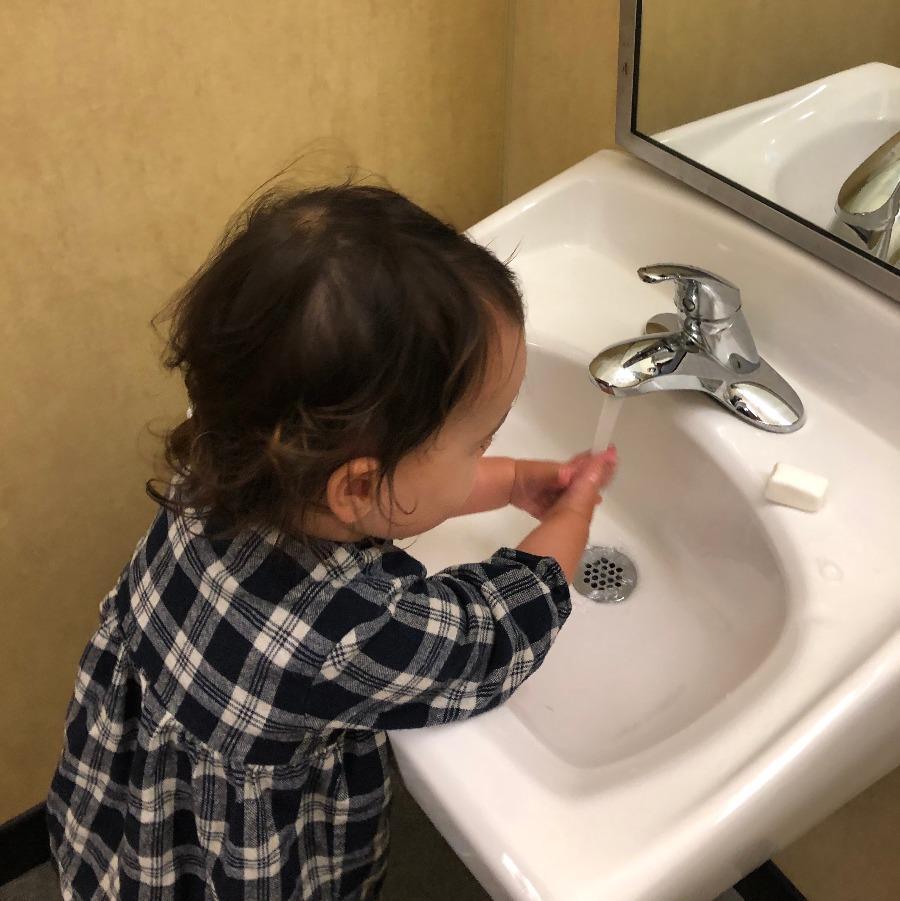
Reproduced with permission from Molly Schaot’s At Home With Toddlers, Waypoint Montessori
In Montessori pedagogy, we use a child-led approach to toileting. We do not use rewards, nor do we attempt to completely upend a child’s daily life by focusing solely on potty training for a certain number of days. We simply make no-pressure trips to the bathroom a part of our daily activities, all while working to help your child connect the feelings inside their body to their output of urine and bowel movements through the use of soft cotton underpants.
This happens in a process many Montessorians call “Toilet Learning.” It takes place over time and according to the ability and will of the child. There are phases to this learning that children move through, and this post will explain each phase and how children move through them. The key thing to remember is that toilet learning is not a linear process. Children will move from one phase to the next, then might move backward before moving forward again. Sometimes they might be partially in two different stages at once. A child may be in Stage 1 with their bowel movements, but in Stage 3 with producing urine. It is very important that the adults in the child’s life have patience and accept the child’s development as it is in each moment. Your child can do this and will do this. The process, and how your relationship holds up throughout, is far more important than how quickly your child moves from one stage to the next.
Stage 1 – Collaborating in the Bathroom:
Your child is willing to collaborate with you in undressing, sitting on a floor potty or toilet, then collaborating with you in dressing again and washing hands. If they don’t produce anything on the potty, no problem. At some point (often the first time happens after waking up dry from a nap) the child produces urine while sitting on the potty and you can calmly point out that this is what we were waiting for!
Stage 2 – Knowing After Going:
Your child knows they have urinated or had a bowel movement after the fact. They may come to you and point out a wet diaper or underpants, or they may get your attention as they are urinating to let you know that something interesting is happening with their body.
Stage 3 – Knowing what to do in the Bathroom:
Your child knows how to voluntarily produce urine or a bowel movement while sitting on the potty. Eureka! The adults develop routines for the child that include visiting the bathroom many times during the day. They avoid setting a timeline and focus more on using the bathroom at moments of transition from one activity to the next. Your child does not like being called away from their playtime to sit in the bathroom, and may engage in power struggles if asked frequently to do so. This is usually the longest stage of development in toilet learning. Have patience and keep up the routine. Stage 4 is coming!
Stage 4 – Knowing when to Go:
Your child knows they need to urinate or have a bowel movement, but it might be only moments before. Clothing choice is so important during this stage because the easier it is for your child to undress independently, the more likely they are to get onto the potty in time to stay dry. Over time, your child will become aware with more warning and be able to take themselves to the bathroom in plenty of time to get undressed.
